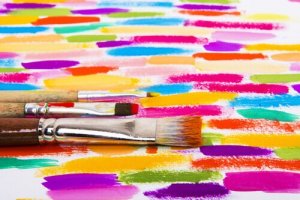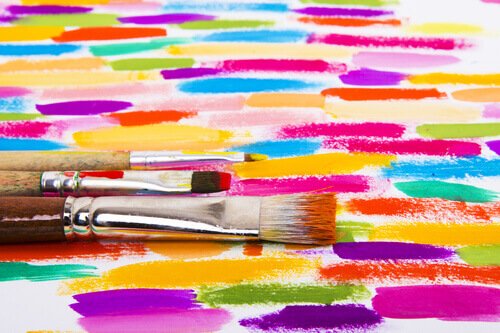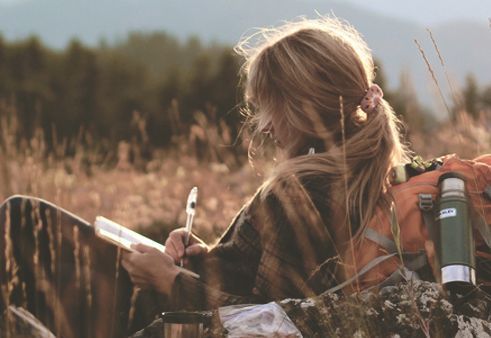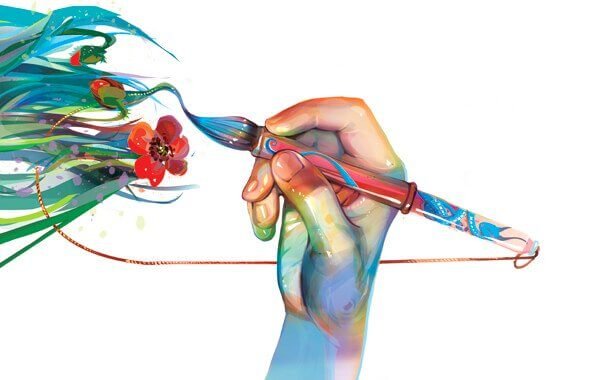Art Therapy: Definition and Benefits


Art therapy is about people. It’s not a project about the person, it’s a project they do based on their discomfort and desire for change. Through personal and cultural differences, art therapy tries to refresh the conditions for creative output, recognize the specific details of the different art forms, and understand all their impacts.
We can define art therapy as a discipline with specific aspects and concrete limits. It’s a form of support (or sometimes therapy) that uses visual arts as a way to help people get back or improve their mental health and their emotional and social well-being. Art therapy’s objectives are exactly the same as psychotherapy.
This support focuses on art as a way of communicating. And that’s how it helps people express and communicate feelings. That makes it easier for them to reflect and achieve the changes in behavior that they need. Using artistic creation as an action starts up a specific process: it takes over the therapeutic space then interrupts reality and reevaluates it.
The art forms that art therapy uses
The art forms that are used in therapy are visual arts. That means painting, sculpting, collage, scenic arts like acting, stories, reminiscence theater, role playing, and puppetry. When it comes to music they use rhythm, sound, voice, instruments, and in writing they can use different genres. Art therapy is a way of speaking the truth through symbolism. The things people express through creation might represent acts of aggression, abandonment, loss, and feelings. They’ll also do it indirectly, without meaning to.

Theater
In plays, dramatic work, or puppet shows, the patient speaks through the character. It’s the art of acting through a fictional character. It’s process of individual and/or collective creation that sits between two separate worlds: fiction and reality. And when it comes to clay sculptures they start a dialogue with the material. It’s about encouraging this person to find themselves through the material. But it’s also about being with them on their journey from the clay to themselves.
Painting
With painting, they take a first step to unblock themselves. This way they get carried away by all the images, traces, shapes, and colors that come to them. The point is to get their hands to stop censoring their eyes, like a kind of disinhibition. And then they can organize things later and get closer and closer to their deepest self.
Dance and voice
When it comes to dance there’s a first moment, a time when they become aware of their own movement. What we mean is that they can hear it and hear themselves through that motion. And that will help them get closer to themselves and communicate with other people later on. When it comes to voice work you want them to find and use their natural voice and free up their breathing. You can do this by having them improvise and combine a lot of different sounds.
Writing
And then there’s writing, which can give them new ways play with their own experiences through their imagination. There will be imaginary situations and friends, different timelines, and in the end they’ll recreate their stories in fiction.
Working on emotions in art therapy
Emotions are extremely important when it comes to human experiences and development. Working with arts through art therapy helps people personally and emotionally develop. There are four stages for working on emotions in art therapy: naming, exploring, experimenting, and integrating. Emotions are our main way of communicating and can even be more important than words. So if your words don’t go along with the right emotions, people probably won’t believe them.
Normally when you express something emotional you use facial expressions, images, verbal metaphors, and tones of voice to communicate better with people. They help you understand and express much more than words by themselves, as long as the emotions line up with the words. Arts, just like all non-verbal expression, encourage the exploration, expression, and communication of things we’re not conscious of.
Working on emotions through art therapy can improve the quality of your relationships. It also focuses on the emotional factor and helps you become aware of hidden aspects, which will help you develop. Basic emotions like fear, anger, happiness, love, sadness, and uncomfortable feelings are essential and necessary for emotional balance.

Why emotions are so important
All your emotions play a part in your cognitive abilities, your physical health, and your professional performance. Having a good emotional intelligence means being able to express, with some particular situation, just the right emotions in just the right amounts. It also means being able to being able to see other people’s emotional states and being able to empathize.
Working with art can help people’s personal and emotional development. The unconscious mind deals more with symbols than logical words. And that’s why using art can make it easier to develop a process of reflection. You can communicate a lot more things through art, especially unconsciously. And that’s because images convey a lot more than words and are a safe way to explore difficult subjects.
Benefits of doing psychotherapy through art
Art therapy has benefits when it comes to helping people develop interpersonal skills. It puts the patient in contact with other people around them more easily, because of the way this kind of therapy makes it easy to express yourself. It’s also very useful for managing behavior, improving self-esteem, and avoiding any of the negative effects of anxiety.
Now we’ll give you more details about all advantages art therapy has for the people who do it:
1. Expressing feelings that are hard to verbalize
It can be hard for us to express the things we feel or think in the more traditional ways. That’s why, since art therapy is a tool that encourages and works on expression, it can help you give a shape to those thoughts and feelings that are so hard to let out.
2. Developing healthy confrontation skills
Confronting feelings and emotions in a creative way can be very helpful when it comes to changing deeply set behaviors or habits that people do whenever they feel like they need to express those emotions. Art therapy helps when you’re going through a sad time and you try using that emotion to create something. It’s especially important when it comes to confronting the situation in the best way possible.
3. Exploring imagination and creativity
Using this kind of therapy will help the person boost their ability to create and imagine things. They can also boost those skills by working on them in a more focused way and with the therapist’s help.
4. Improving self-confidence and self-esteem
Proving that you can do something for yourself will help you get to a more emotionally balanced place. And along those lines, achieving your own goals will help you improve your confidence in yourself and fill you with the reminder that you’re doing it well.
5. Identifying and clarifying worries
Capturing something in the outside world that worries you on the inside will help you look at all the concepts you have trouble understanding in a more practical, accessible way. These are usually abstract ideas that you can only sink into your brain if you look at them from the outside.

6. Increased communication skills
Using artistic outlets to express themselves will help people pick up new tools for good communication. And that’s true both about their communication with other people and with themselves. Being able to express whatever they have a hard time verbalizing trains them to express things more clearly and in a way that lines up better with what they want communicate.
7. It improves physical abilities
Art therapy usually means using your body to express something that you can’t say. That’s why this kind of therapy is also good for people who have a hard time doing specific movements or have bad coordination.
8. Art reduces levels of stress and anxiety
Doing activities related to art and creativity will give people a time where both their stress and anxiety levels go down. People who do this kind of therapy find these kinds of activities relaxing.
9. It encourages people to work on how they think and helps them reflect
Scientific thinking goes even farther and also has to do with being able to be independent or solve problems in your daily life.
10. It improves concentration, attention, and memory
Learning to concentrate is important for your day to day life. Having the ability to concentrate will help you a ton when it comes to being effective at just about any task. There are a ton of benefits to having good concentration: improving your memory, decision-making abilities, accuracy, and flexibility with the goal you have on your hands.

The things people in different parts of the population use art therapy for are physical health, mental health, emotional well-being, and social well-being. When it comes to the people who need some help with their bodily expression, you can use a kind of art therapy based on techniques from psychotherapy.
It’s also just as possible to use art therapy with kids as it is with teenagers and adults. And you can even adjust it to their therapeutic and educational needs. In that last case, cognitive-behavioral techniques can be a great partner for art therapy (or vice versa) when it comes to teaching about things that are a direct part of educational development.
This text is provided for informational purposes only and does not replace consultation with a professional. If in doubt, consult your specialist.








